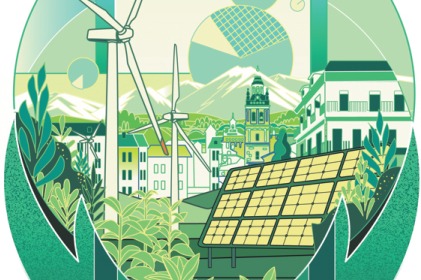Shattering the iron rice bowl

China Reform and Opening – Forty Years in Perspective
Shattering the iron rice bowl
Editor's note:Laurence Brahm, first came to China as a fresh university exchange student from the US in 1981 and he has spent much of the past three and a half decades living and working in the country. He has been a lawyer, a writer, and now he is Founding Director of Himalayan Consensus and a Senior International Fellow at the Center for China and Globalization.
He has captured his own story and the nation's journey in China Reform and Opening – Forty Years in Perspective. China Daily is running a series of articles every Thursday starting from May 24 that reveal the changes that have taken place in the country in the past four decades. Keep track of the story by following us.

The high-water mark of China’s reform and opening-up occurred on March 22, 1998, when Premier Zhu Rongji introduced his program of reforms as "one guarantee", "three achievements" and "five items of reform". "One guarantee" and "three achievements" were responses to the Asian financial crisis that erupted in 1997. The "five items of reform" were a combination of market and planning measures which used the administrative power of planning to push China toward the market.
Zhu's "one guarantee" was in reality a combination of three guarantees, aimed at protecting China from the devastating effects of the Asian financial crisis. The first of the three elements called for continued 8 percent growth, with inflation held at below 3 percent. The third element was the assurance the Renminbi would not be devalued.
In keeping with a pattern, Zhu set a tight, almost unrealistic deadline of three years in which all of this was to be achieved. This had the effect of placing enormous top-down pressure on bureaucrats to get results. The first of the “three achievements” called for an overhaul of China's banking and financial system with the aim of strengthening the role of China's central bank while allowing the commercial banks to operate both independently and more professionally. The second set the lofty goal of pulling most large and medium-sized SOEs out of the red to establish a "modern enterprise system" . The third was to cut the number of ministries and China's cumbersome bureaucracy in half.
The "five items of reform" would involve a basket of linked measures for social welfare and fiscal reform. The five items were grain distribution, housing, medical care and retirement pensions, the overhaul of China's financial and taxation system, and the opening of new channels for raising capital.
This basket of reforms served as the centerpiece of Zhu's administration as State Council Premier. The "three achievements" were banking reform, SOE restructuring and government downsizing respectively. The "five items of reform" were critical, underlying aspects of society and economic and social reforms that are understood today to take China beyond reform. Zhu was determined for China to enter the WTO to assure momentum for his reforms would be perpetuated in the future by the market itself.
Key to China’s reforms was an understanding the tools of the market are essential to open up the arteries of free-flowing capital, prices, goods and the finances required to make an economy grow. But the hand of the central government, and with it the old tools of planning, are required to make capital and goods flow. Zhu Rongji's "macro-control" model of "managed marketization" of China's economy involved:
- Introducing the tools of monetary and fiscal intervention accepted and applied in developed market economies, while at the same time using the old command tools of planning to make the new tools work;
- Anticipating "mass-movement economics" — patterns of enlarged social reaction to opportunities that characterized China's political mass movements of previous era;
- Applying "signal economics" at the critical time to send the hard messages required to make the masses shift direction; that is, to manage mass-movement economics;
- Setting standards that cannot be met, with the knowledge this is necessary to motivate people to achieve results;
- Maintaining a vision, observing changes in the situation carefully, moving consistently toward critical objectives and having change as a constant, though not disruptive, force in the system.
Controlling inflation, rationalizing the banking and financial sectors, steering China through the Asian financial crisis and shifting the export-based economy toward a growth model that will rely also on domestic consumption were all clear goals of the reforms. But there are critics who say his reforms have not been completely carried through.
While perhaps merely serving to underline restrictions imposed by existing systems, such criticisms may have some substance. However, the fact Zhu has changed the overall direction of the Chinese economic system and with it, the social structure, is achievement in itself. Zhu, in his position as premier, set China on a new course. By pushing for China's entry into the WTO, he gave momentum to a new and irreversible reality for China's future.
Please click here to read previous articles.
































